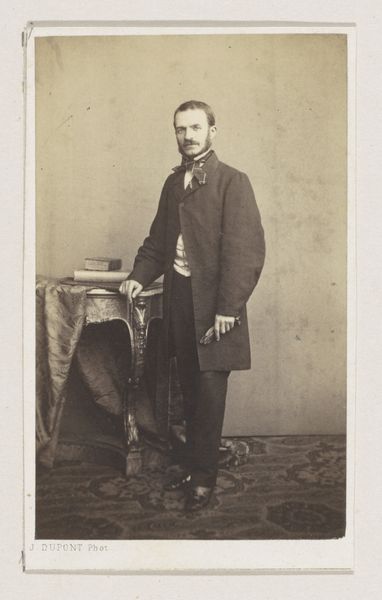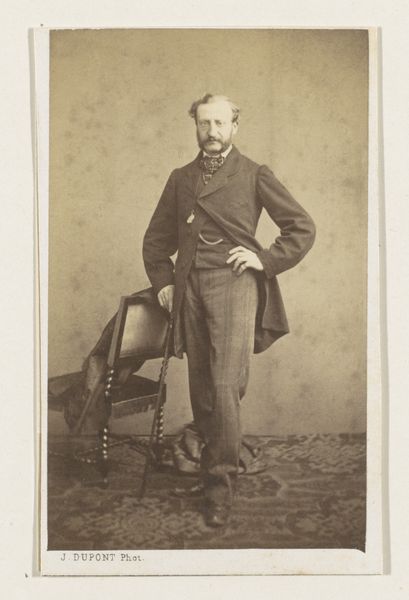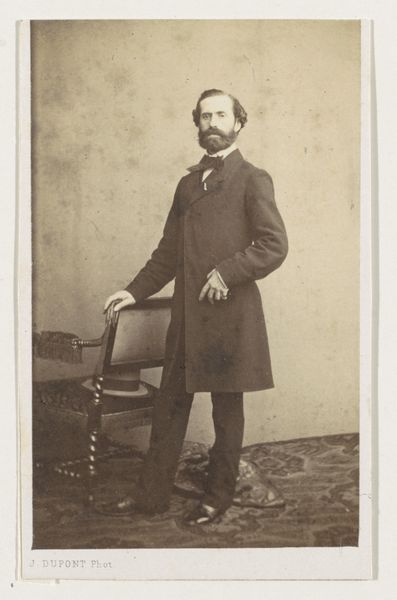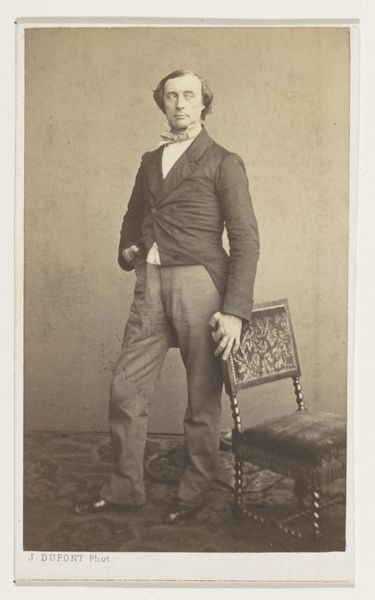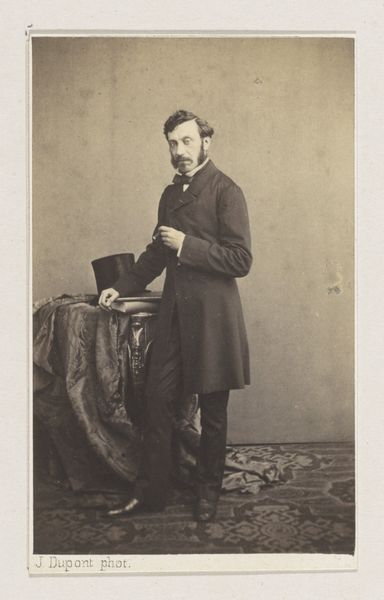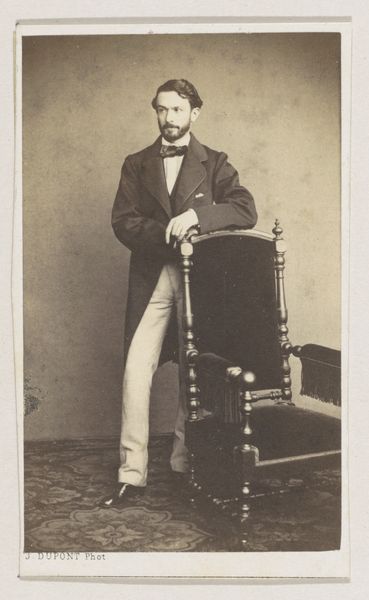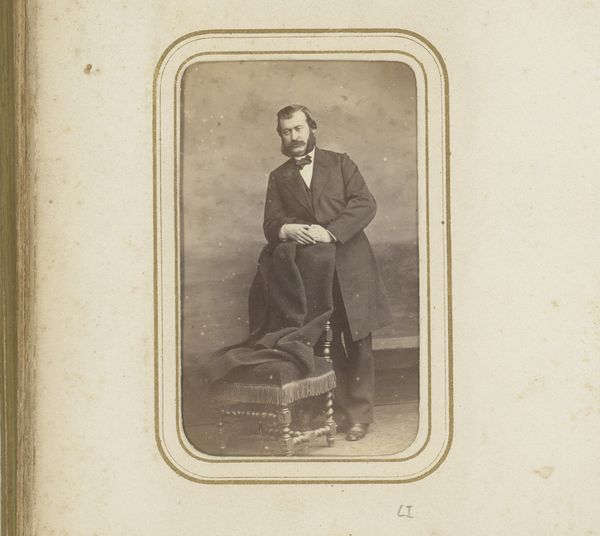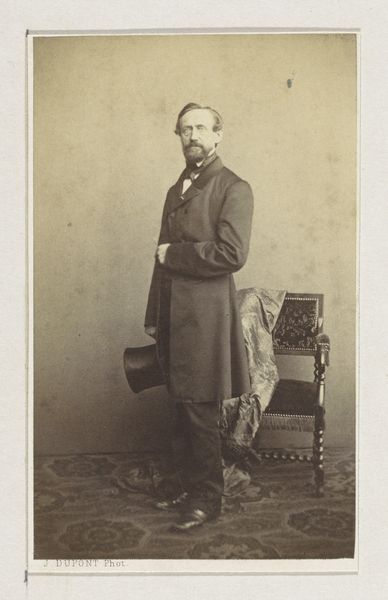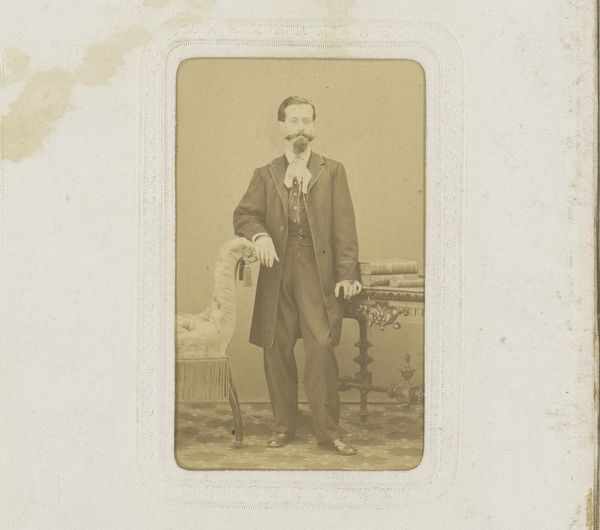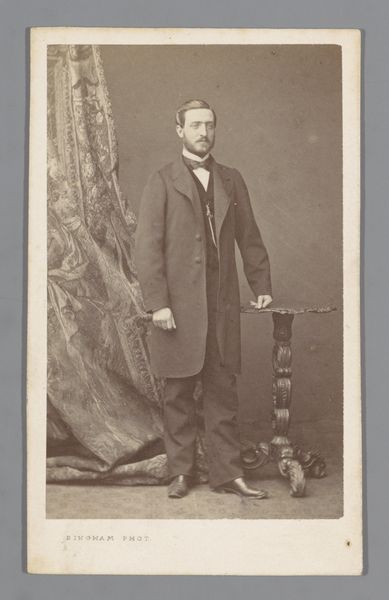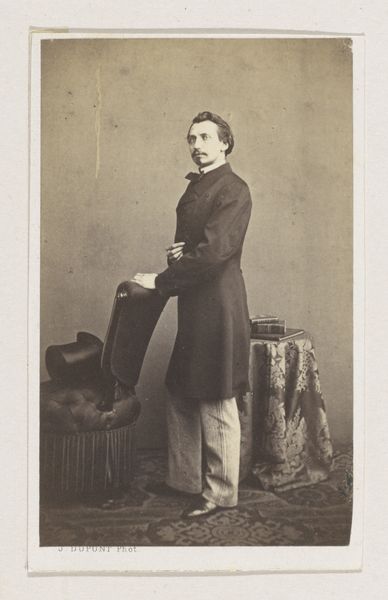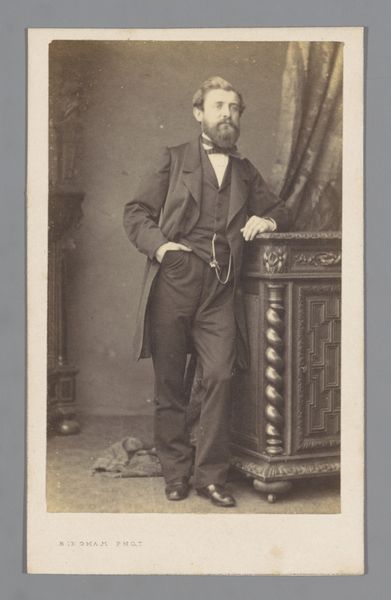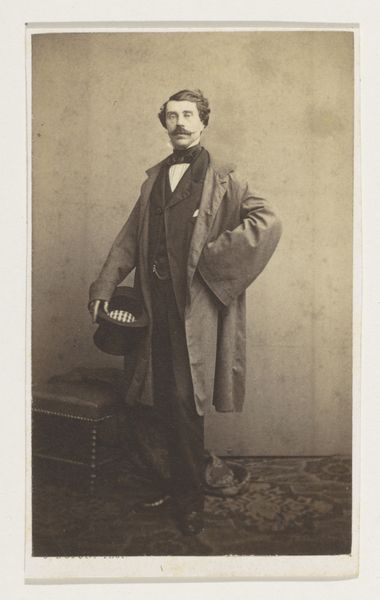
photography, albumen-print
#
portrait
#
print photography
#
photography
#
albumen-print
#
realism
Dimensions: height 100 mm, width 60 mm
Copyright: Rijks Museum: Open Domain
Curator: What strikes you most about this albumen print? It’s a portrait by Joseph Dupont from 1861, titled "Portret van de graveur Erin Corr, ten voeten uit," or "Portrait of the engraver Erin Corr, full-length". Editor: The tonal range, for sure. The muted browns and beiges lend it such a sense of solemnity. The figure's placement, slightly off-center, creates a visual tension. Curator: Dupont was indeed a master of capturing the character of his subjects. Photography at the time served a specific social function, allowing access to images of middle class subjects who previously would never be seen on the art world. It democratized portraiture. It is an intriguing study in pose and social expectation. Editor: I notice that his right hand delicately rests upon the chair's back, with an intriguing, light-catching signet ring. And observe how his hat becomes a focal point in the lower part of the picture, an element that also invites questions of light and shadow. It nearly has a still life feel in the rendering. Curator: You know, these details tell us so much about Corr’s status. His attire, his pose, and even the carefully selected props all reinforce his identity as a respected professional in the Belgian milieu of that time. Consider also the politics of representing labour at that moment, when photography was quickly entering and forming public memory. Editor: Right. Formally, I find that there's such economy in the use of light and shadow to sculpt Corr's face. Curator: Absolutely. The way photography documented the world changed forever the function and possibilities of visual culture, and we have to appreciate the historical contexts. Corr's contribution as an engraver, for instance, should also be studied under that light, as the development of photographic methods largely overtook the space for etching methods in many areas. Editor: Analyzing such details yields profound insight into the person, but I find formal qualities so compelling about photography from this time period. Dupont masterfully turned what could be simply a documentation of social position into a subtle statement about individual character. Curator: Yes, understanding the portrait from social context and form analysis certainly shows how powerful these early photographs could be, both as markers of identity and as works of art.
Comments
No comments
Be the first to comment and join the conversation on the ultimate creative platform.
